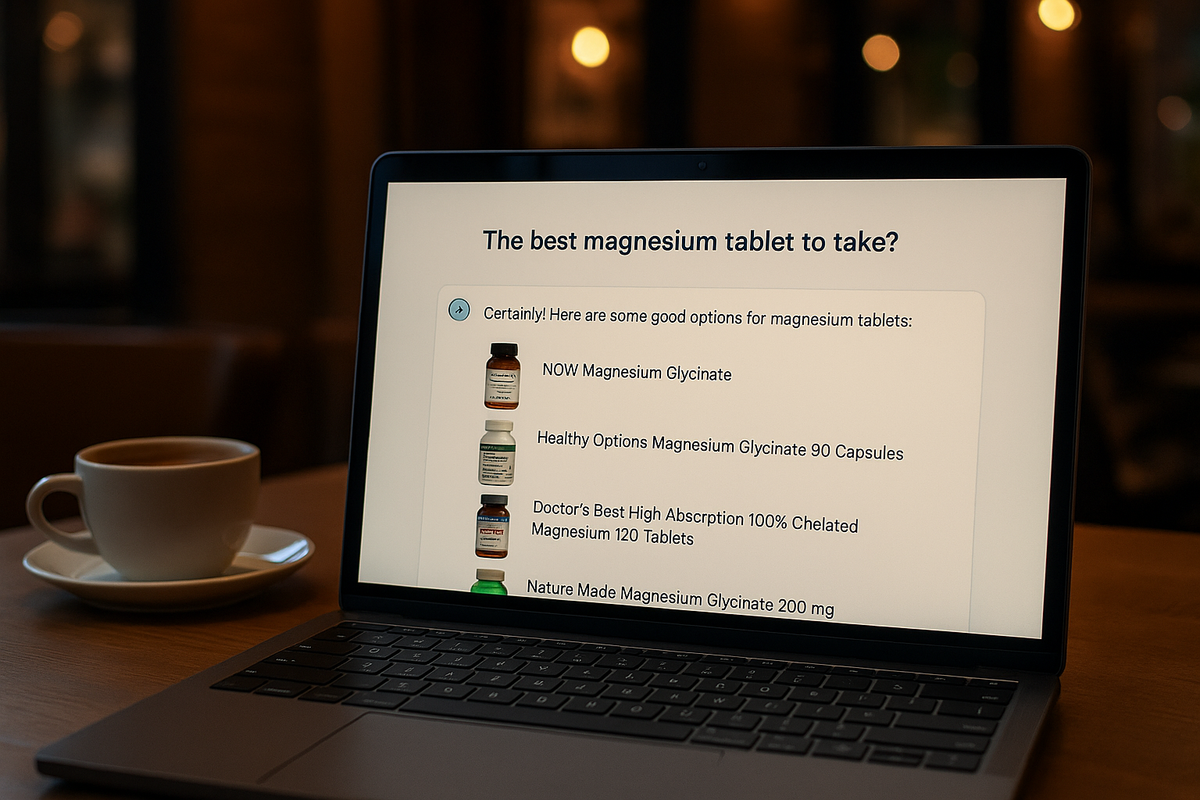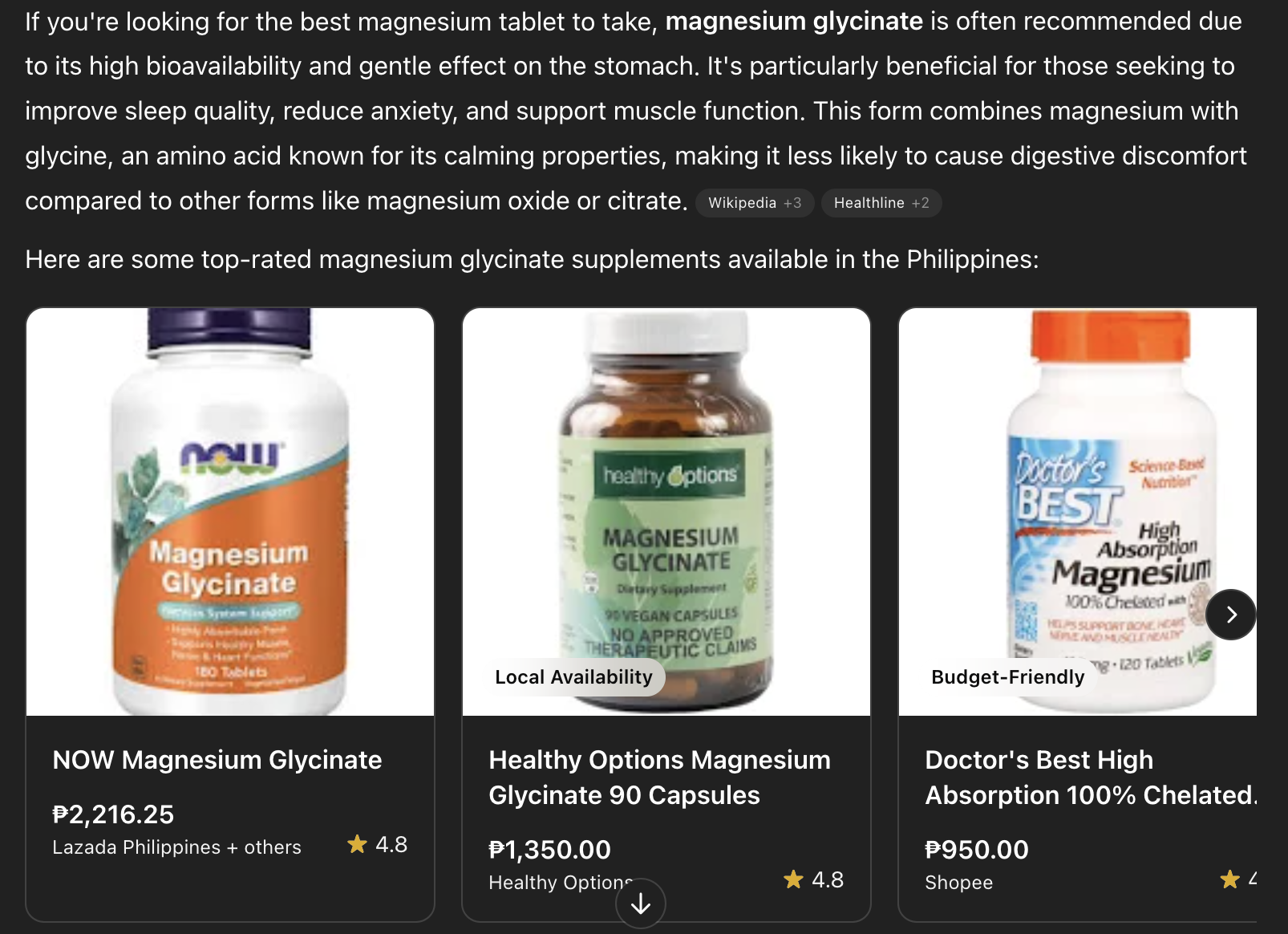Why Your Product Doesn’t Show Up in AI Search (And How to Fix It)
AI search is changing the game. Learn why GEO — generative engine optimization — is the new SEO for e-commerce brands.

Hi, it’s G — your favorite AI-loving, sometimes-scrappy builder trying to make sense of all the changes happening in search right now. If you’re running an online store, offering a product, or even thinking of launching one, this blog is especially for you.
Let’s talk about a quiet revolution that’s already reshaping the internet: GEO — Generative Engine Optimization. And no, it’s not just another acronym to stress about.
When the AI Becomes the Salesperson
Here’s a wild thought: people aren’t “Googling” the same way anymore.
Where we used to type “best budget wireless headphones,” scroll through 10 blue links, and click on Wirecutter or TechRadar, now we’re seeing something different — a clean, AI-generated answer that already includes 3–4 specific product picks, features, and even links to buy.
Sometimes, folks don’t even go to Google. They start on ChatGPT, Claude, or Perplexity. And in this new landscape, if your product isn’t one of those 3–4 mentioned, you’re invisible.
That’s the harsh truth.
What Is GEO, Really?

In the old SEO world, it was about getting people to click your link. Now with GEO, it’s about getting the AI to mention your product before the click ever happens.
Think of it like this:
"SEO was about traffic. GEO is about trust."
If you’re not the answer, you’re not even in the conversation.
Let me paint a quick picture:
Someone asks: “Best budget shoes for flat feet?”
Perplexity might say:
“For arch support under $100, the ASICS Gel-Nimbus and New Balance 860v12 are top-rated for stability and comfort.”
Notice anything?
You don’t need to scroll or compare across five websites anymore. The AI already did the work. It scraped dozens of sites, synthesized the info, and gave you a confident, fast answer.
And the rest of the brands? Left out.
Why This Matters Now (Not Later)
This isn’t just about tech trends or early adopters. This is about your survival in the e-commerce space.
If your product isn’t showing up in these AI-generated answers, you’re not just losing traffic — you’re losing the customer before they even know you exist.
Because let’s face it — people are getting lazier (in a good way). They want:
- Answers, not homework
- Recommendations, not research
- Trust, not tabs
3 Consumer Behavior Shifts I’m Seeing Everywhere
- Good enough is good enough.
When the AI gives a solid answer, most people just go with it. No more clicking five tabs and doing a side-by-side spreadsheet. The AI already did the legwork. - The trust shift.
There’s something about an AI saying “this is a top pick” that feels more objective — even if it’s not. That mention carries weight. It’s the new version of “As seen on TV.” - Ongoing conversations.
Users don’t just ask once. They follow up. “Which one’s lighter?” “Got any waterproof versions?” If your product wasn’t in the initial answer, you’re not in the follow-up either.
So… How Do You Win in the GEO Era?
Here’s what I’ve been helping clients with — and what I’d do if I were launching a product today:
1. Structure Your Product Info for AI
Use schema markup. I know, sounds nerdy — but think of it as speaking the AI’s language.
- Product name, price, reviews, specs? Mark it up.
- Tools like Google’s Rich Results Test can help you check if you’re doing it right.
- Keep everything consistent across your site, feeds, and marketplaces. No conflicting prices!
2. Write Like You’re Answering a Question
The AI is pulling from descriptions that read like solutions.
❌ “Premium portable blender with sleek design.”
✅ “USB-C rechargeable portable blender with 20 oz capacity, perfect for gym smoothies and travel.”
Answer real questions like:
- “Can this charge in a car?”
- “How long does the battery last?”
- “Is this safe for hot liquids?”
3. Be Everywhere (Not Just on Your Site)
GEO pulls from all over the internet — Amazon listings, social posts, blog reviews, YouTube transcripts.
- Clean up your Google Business Profile.
- Align info across your platforms.
- Pitch your product to writers of “Top 10” listicles — those get cited often.
4. Don’t Ignore Technical SEO
Fast site. Mobile-friendly. No JavaScript hiding your product info. Use proper heading structure (H1, H2, H3). All these still matter.
5. Real Reviews, Real Authority
- Prompt buyers for reviews.
- Add FAQ sections to your product pages.
- Build backlinks from relevant blogs and YouTubers.
How to Know If You’re Winning the GEO Game
You might not see the traffic spike right away. Instead, look for:
- Mentions of your brand in AI answers (search manually on ChatGPT or Bing Chat).
- More branded search (people typing your store name directly).
- Higher-quality traffic that converts better.
Want a pro tip? Ask the AI to compare your product to a competitor. If it doesn’t mention you, you’ve got work to do.
Real Talk (Where I’m At)
I used to think SEO was all about page titles and keyword stuffing. Now? I see it as reputation engineering for AI. And this shift from SEO to GEO? Honestly, it’s a bit intimidating… but also exciting.
Because if you’re a small brand with solid info, GEO can level the playing field.
You don’t need the biggest ad budget. You just need clarity, consistency, and a little bit of AI fluency.
Final Takeaway
GEO isn’t replacing SEO — it’s leveling it up. The brands that learn how to feed the AI with clear, structured, honest product info? They’ll be the ones getting recommended, not just ranked.
So yeah, your next battle isn’t to be #1 on Google. It’s to be the one the AI trusts to recommend first.
And that? That’s a game worth playing.
Let’s build better, smarter, and more discoverable.
Till the next post,
G